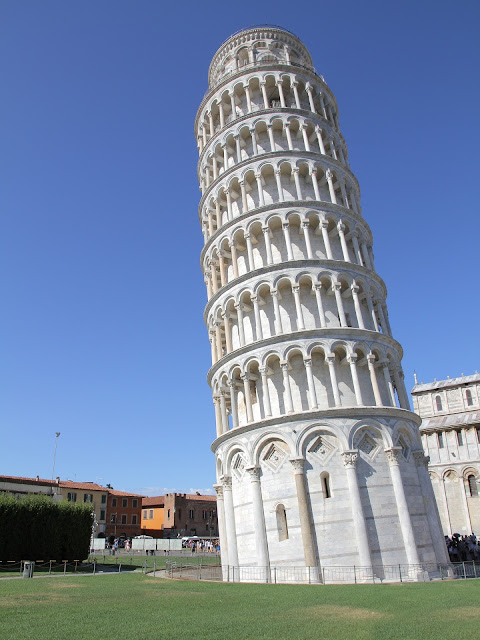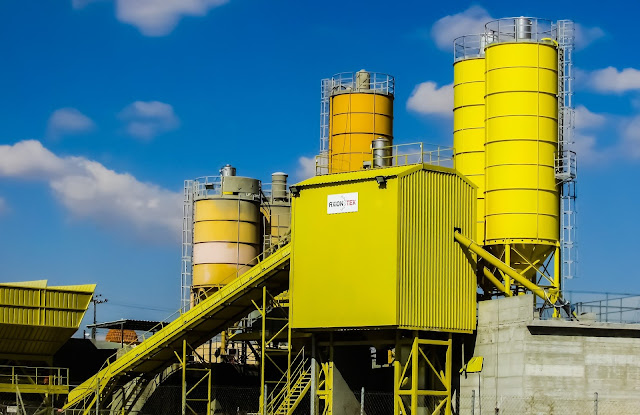How can we protect Leaning Tower of pisa?
ALSO READ : LEANING TOWER OF PISA
In 12th century Italy, a tower was under construction in the town of Pisa. The design was for a beautiful, free standing bell tower in the finest Romanesque style. But as construction of the third level began, something went wrong: the whole tower began to tilt. And by the time it was finished, everything was noticeably leaning to one side. Thankfully, the mistake was seen as charming by visitors. And eventually, it turned into a global icon and tourist attraction. But for the Civic Tower in Pavia, which was built around the same time, structural problems led to a fatal collapse in 1989. The next year, a team of Italian engineers was formed to prevent the same fate in Pisa while maintaining the tower’s iconic tilt.
For both buildings, the problem wasn’t just above the surface. It had to do with the support of the foundation underneath. And since modern structures can be many times larger, the stakes are much higher you definitely don’t want a leaning skyscraper on your hands! So to keep things standing tall above ground, you need to look at what’s going on below it. Civil engineering is about creating the infrastructure we need for the places we want to live. Roads, bridges, tunnels and ports all require planning to build, and maintenance to keep working safely and efficiently. And infrastructure supports vital networks like water and power supplies. In fact, the US National Academy of Engineering has made repairing and improving infrastructure one of its grand challenges for the 21st century. And as we have to learn, "a structure that’s going to last needs to be on a solid foundation". And that’s where geotechnical engineering comes in. At least for now, the infrastructure we build is connected to the ground. Even the sturdiest, most well designed building won’t last if the land supporting it isn’t up to the task.
So geotechnical engineers spend a lot of their time investigating the rock and soil that structures are gonna be built on. As well as building on top of the ground, engineers often dig into it, like for a harbor or a dam, or tunnel through it, as in the case of underground train tracks. In each of these scenarios, you have to consider how the ground’s characteristics might affect the structure’s stability a consideration the designers of the Tower of Pisa overlooked! We’ve seen before how forces like crosswind and the weight of the materials can affect a building. Many of the same lessons apply here. The foundation of a structure is the part that actually connects to the ground and transmits forces to it. So that might be columns or walls that extend into the ground, for example. And they’re as much a part of the structure as the bits we can see. To stop a building from falling over, sinking, or snapping, it needs to be supported through its foundation by a reaction force. In other words, the soil needs to resist the force transmitted through the foundation. Soil might seem pretty straight forward. After all, it’s just dirt, right? But, in reality, soil is one of the most complex environments engineers work with and it comes with a lot of variety. Just like other materials and fluids, soils and even rocks have mechanical properties that make them suitable or unsuitable for building on top of.
If enough force is applied, the ground itself can shift and change shape in intense ways. The capability of the surrounding soil to withstand those forces is its bearing capacity: how much force can be transmitted over a given area without causing the ground to drastically change shape. Just like a solid material, soil can actually undergo failure in the mechanical sense! At that point, it no longer fully supports the structure, which is what happened to the Leaning Tower of Pisa. The foundations of the tower weren’t deep enough to support it after it reached a certain height. That meant the stress applied by the tower’s mass was bigger than the soil’s bearing capacity, which ultimately shifted the ground and tilted its foundation. Bearing capacity is tricky to calculate, but essentially it depends on both the depth and design of the foundation and the qualities of the soil that you’re building into. Since you usually can’t control the soil, you need to understand it and build a foundation that accounts for any potential problems. The main property you’ll be interested in is shear strength. As the foundation applies the load to the ground, the soil redistributes the force, creating tension throughout the region around it. Just as we saw for materials, everything has a certain internal resistance to shear stress the kinds of forces that act in opposite directions.
There are other kinds of stresses to consider, but shear stress is the most important because it’s the one most likely to lead to failure. Layers of soil that push past each other can quickly stop supporting a structure’s foundation. The shear strength is the measure of the shear stress the soil can tolerate before it reaches failure. The higher the strength, the more stress the soil can resist before it finally gives way. It’s one of the biggest factors that determines the bearing capacity you generally want the soil to be as strong as possible to ensure as much stability as you can. The trade off is that stronger soil can sometimes be a little tricky to excavate in the first place. And some structures, such as bridges, have to be built in particular locations. So you often have to work with whatever soil happens to be there! The key to understanding the strength of a particular piece of ground is that soil isn’t one homogenous thing. Instead, it’s best to consider soil as a collection of tiny grains of rock and left over organic matter from living things. The exact materials differ between soils, but in geotechnical engineering, the focus is on the size and shape of those grains. That’s where the soil gets its strength or weakness from. It helps to think of the concept of viscosity, which we encountered in fluid mechanics.
When the soil undergoes shear stress, the friction between the layers of soil helps resist the stress and give it solidity. One of the causes of that friction is that the grains interlock with one another and resist any change to their arrangement. If things do move, there’s the added friction of the particles rubbing together. Both of these contribute to the shear strength. Separate from friction is what’s called cohesion, or the tendency for smaller particles to stick together, like in modeling clay. In fact, it’s often tiny particles of clay or silt that are responsible for cohesion in soil. So the more clay it contains, the stronger it will be. The size and shape of the grains, and the cohesion between them, are just some of the properties geotechnical engineers use to estimate shear strength. The full picture would take into account all the complexities of the soil, including its mineral composition, moisture levels, and the size of the grains themselves. Not to mention the fact that strength isn’t constant throughout the ground. It can be radically different for buildings on opposite sides of the street, or even at different depths under the same structure. So you’ll want to be sure to do a detailed analysis.
That will guide you in designing a foundation that provides the bearing capacity needed for what you’re trying to build. In 1990, a year after the Pavia tower collapsed, the Italian government set up a team of engineers to tackle the problem of Pisa’s bearing capacity. In the weak soil underneath the Pisa Tower, three meter deep foundations weren’t enough and the tilt was slowly getting worse. After trying different approaches, engineers finally weighed down the side of the tower opposite the tilt with lead and removed some of the soil from that side. In doing so, they managed to sink the foundation a little further into the ground, increasing the contact area between it and the soil, and improving the bearing capacity. The shifted weight of the tower even compressed the soil at its foundation, actually improving the soil’s strength! Now it’s thought that the tower should be safe for at least 200 years, all while retaining its iconic lean. While that’s great news for Pisa, other parts of Italy are prone to a different ground based problem. Because of fault lines in the Earth’s tectonic plates, regions in Italy are susceptible to earthquakes, like other areas across the world.
In 2016, a powerful quake caused devastating damage to the buildings in central Italy. Protecting against the effects of earthquakes is exactly the task seismic engineering is there to tackle. That’s why these people are often known as earthquake engineers. While they share many techniques with geotechnical engineers, seismic engineers have to worry about what happens when the ground itself starts moving. A violent movement can subject the foundation of a structure to a load larger than its bearing capacity can handle. Worse still, the soil might undergo what’s called liquefaction, in which loose, sandy soils lose virtually all their strength and behave like a liquid, which spells disaster for anything built on top! In addition to modeling the soil like geotechnical engineers, seismic engineers have to break out the full toolkit of statics and dynamics to understand the whole structure.
In fact, because the effects of an earthquake are tricky to simulate, seismic engineers often use what’s called finite element analysis. They use computers to model every piece of a structure and predict the exact stresses and strains each piece might feel. Just to be sure, scale replicas of entire buildings are often built and tested on oscillating platforms to demonstrate the real, physical effects of an earthquake! While destroying a model bridge might sound fun, the goal is to test designs and see where faults arise, so they can be made safer. In combination, geotechnical and seismic engineers make sure that structures remain standing tall from top to bottom when they encounter stress at their foundations. In environments dense with infrastructure, like cities, it’s a critical job for the safety of everyone nearby. And this means we can continue to enjoy the Tower of Pisa for centuries to come. In this episode, we looked at geotechnical and seismic engineering. We learned how structures connect to the ground and transmit loads through their foundations, and how those foundations need to provide a high bearing capacity. We also saw how properties of the soil, like shear strength, affect bearing capacity.
Finally, we considered what happens when the ground experiences stress from seismic activity and how seismic engineers work to counteract those effects.
Please don't forget to comment in comment section below and if you have any doubts please let me know in comments and please feel free to comment and don't forget to Subscribe for email notifications.



Comments
Post a Comment